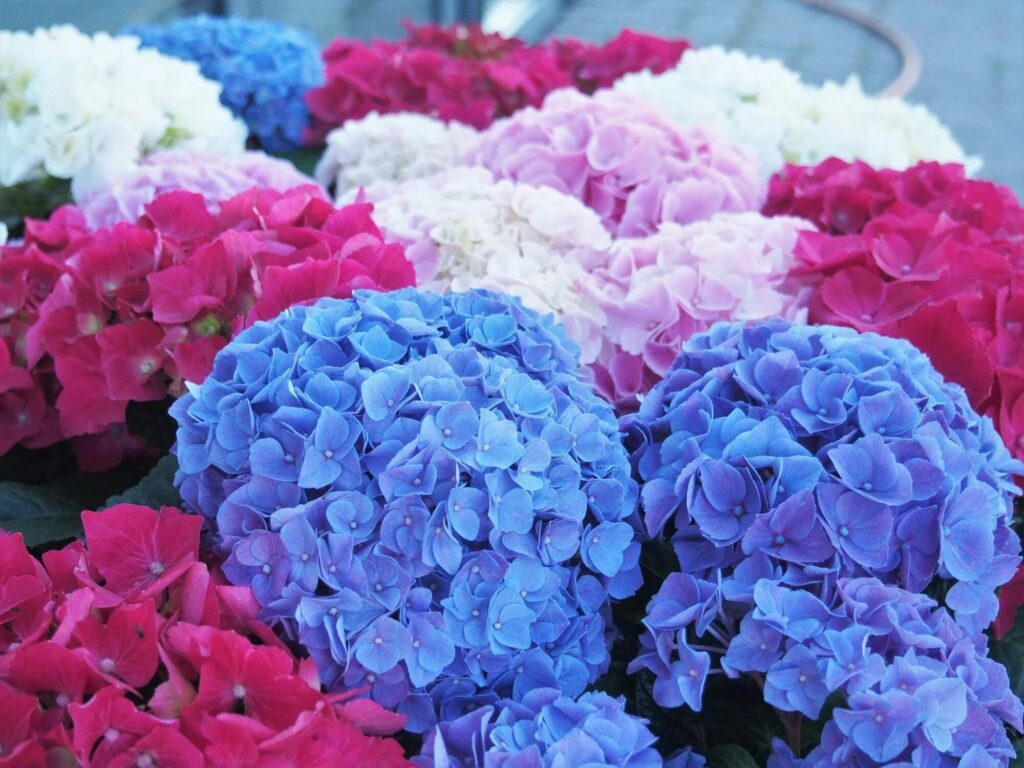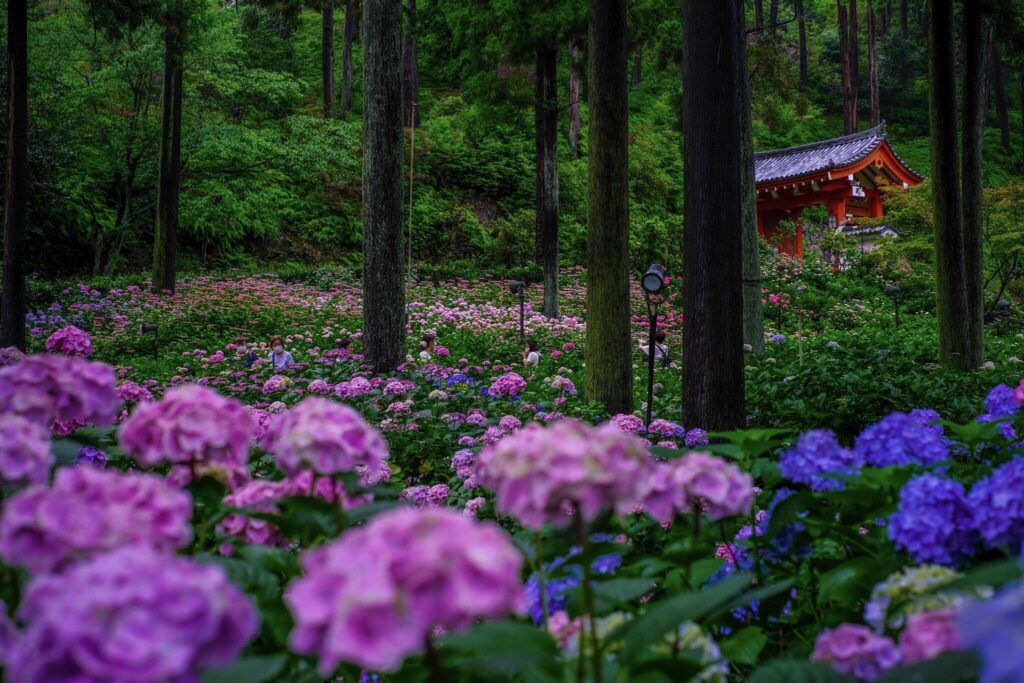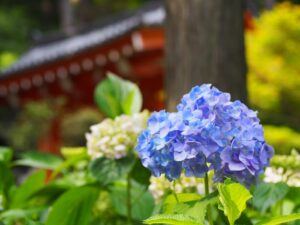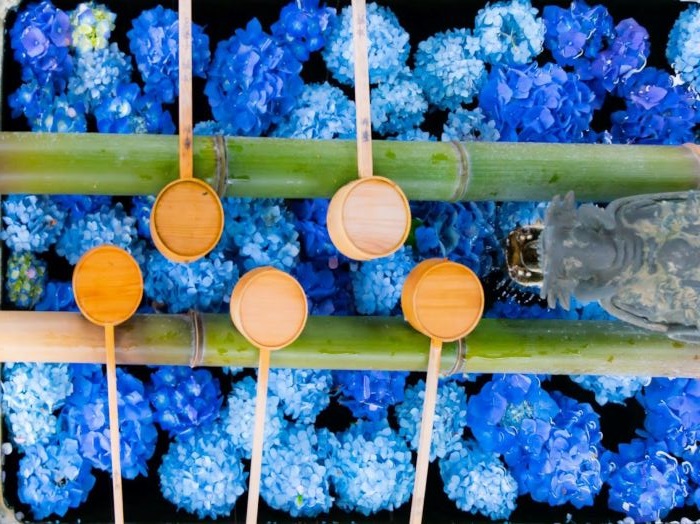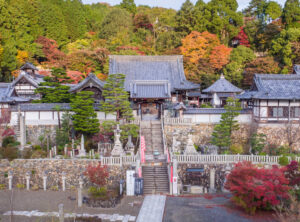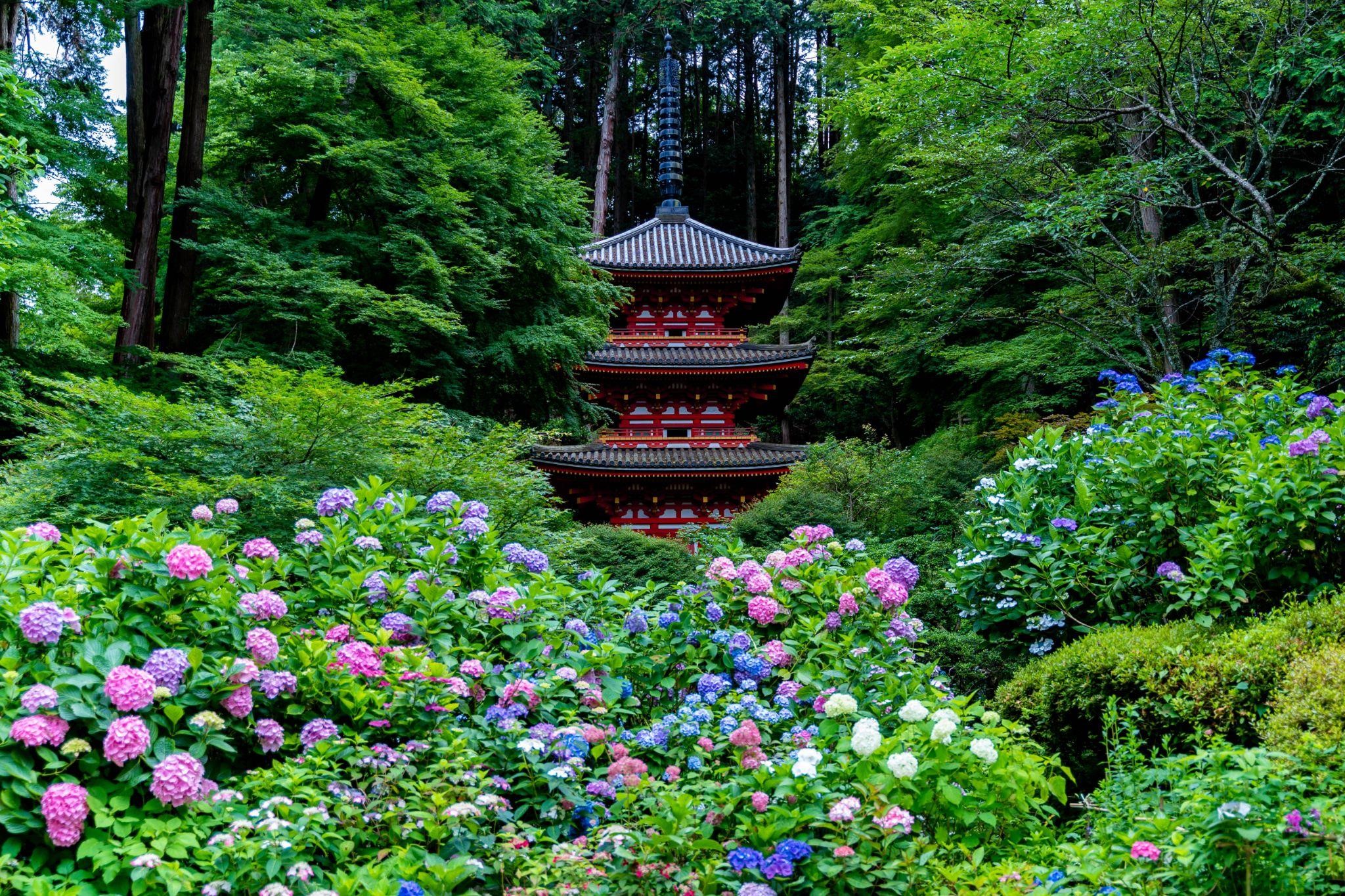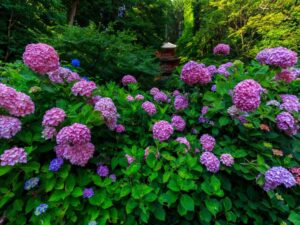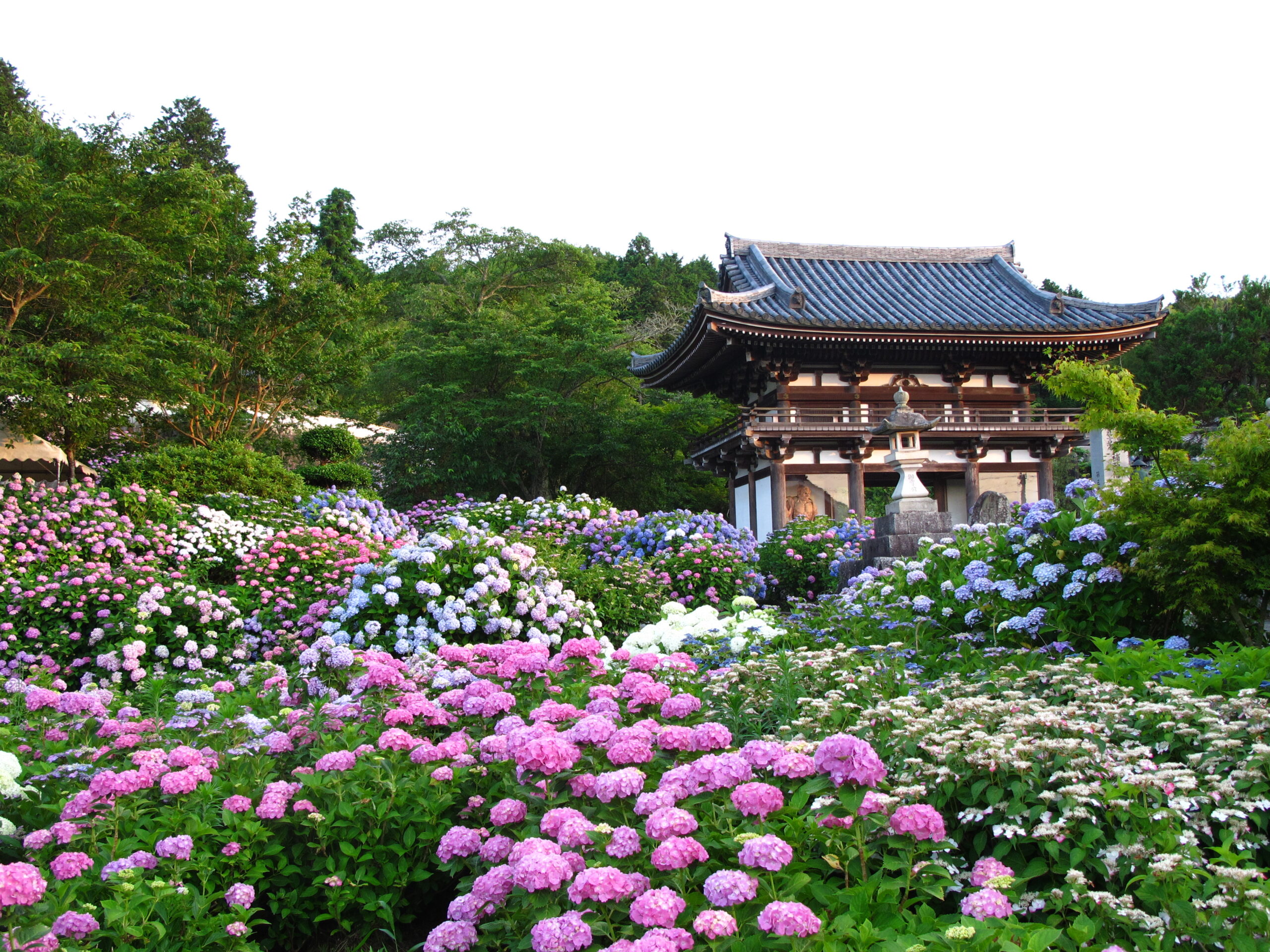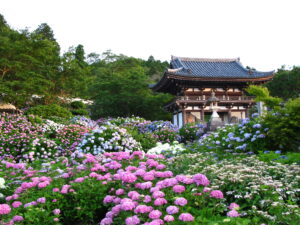Gansenji Temple, an ancient temple in the Kyoto Tea Country region, offers a peaceful and intimate setting for hydrangea viewing. The name “Gansenji” translates literally to “Rock Boat Temple,” and near the entrance of the temple is a boat-shaped rock, where legend has it that monks used it for sacred cleansing rituals. Nestled in the mountains in the southern part of Kyoto, close to Nara, it takes about an hour by car from Kyoto Station. It is also accessible by train and bus from Kyoto City.
Surrounded by dense forest, this hidden treasure creates a serene atmosphere that feels like a secret garden. It is home to a rich variety of flowering plants, such as crape myrtle, water lily, Japanese plum and cherry trees, and more. The temple is exceptionally beautiful after a light rain, with glistening flowers and their delicate scent. In January, April, May, October, and November, you might be able to admire hidden Buddhist statues and treasures.
In the rainy season, hydrangeas in shades of light blue, purple and pink adorn the pathway. The Three-storied Pagoda offers a particularly stunning sight with colorful hydrangeas. It’s an ideal destination for those seeking a unique experience away from bustling tourist spots. Add Gansenji Temple to your itinerary and immerse yourself in its tranquility and fascinating hydrangeas.
Hours:
March – November: 8:30am – 5:00pm (last admission: 4:45pm)
December – February: 9:00am – 4:00pm (last admission: 3:45pm)
Access:
Kamo Station (JR Kansai Line, Yamatoji Line) can be reached from Kyoto Station via rapid train. It takes about an hour, with a single transfer at Kizu Station. From Kamo Station, take Kizugawa City Community Bus towards Kamoyamanoie for about 16 minutes, and get off at Gansen-ji Temple.
Gansenji Temple
Gansenji Temple is an ancient Buddhist temple in Kamo-cho, Kizugawa City, the southernmost part of Kyoto Prefecture. It’s located in the tea-producing region of Kyoto. The temple was founded in 729. T …
